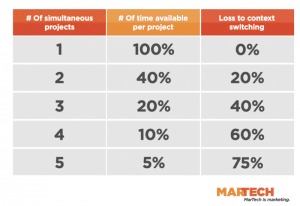SEO is constantly evolving. Whether it’s AMP pages or updates to Google’s algorithms, there’s a lot to take into account. If you want to drive traffic and earn more of those all-important conversions, it’s vital that you stay on top of the continual changes taking place in the SEO field.
One thing in organic search remains a near-constant, however: the value of link building. Links remain fundamental. Earning relevant, good-quality links will help push your site higher up search engine results pages (SERPs). That way, more people will see it, so it’ll generate more traffic. So how should you go about acquiring those links?
This is a tricky question. Google is ambivalent about link building at the best of times, and with good reason. Some websites have been quite unscrupulous about it. Link building scams were once commonplace. This made life harder for users, incurring Google’s wrath. Google’s Penguin update of 2012 was intended to clamp down hard on such practices. Since then, sites guilty of manipulative link building have been punished severely in SERPs.
When it comes to link building, there are no longer any quick fixes. When your strategies don’t work, take a step back and reevaluate. But there are link building methods which are proven to deliver results and are a great addition to your SEO checklist. Here we’ll introduce you to ten of the best. Read on to find out more.
- Get guest posting right
Guest posting has long been one of the most common link building strategies. Its longevity is indicative that, when done right, it’s a very effective way of acquiring good links. If you’re new to all this and you’re not quite sure what guest posting is, it’s very simple. In a nutshell, it involves creating content for a relevant website, and earning links from that website in return for said content. Choosing the right guest posting partners is of the utmost importance. Here, relevance is a more reliable guide than domain authority. Yes, DA remains important, but it’s not the primary concern. Above all, you need to make sure you’re writing guest posts for outlets which are relevant to your own website or niche.
Don’t just churn out any old content. Keep tabs on current news headlines (via Google News, for example) and search trends. This should inform your content strategy by providing ideas that are likely to strike a chord. - Scour for broken links
Many sites are riddled with links to dead pages. You can acquire some good links by finding these broken links and offering your own replacements. Check your links as well, as broken ones can deter your lead micro funnel. At first glance, this might seem like a lot of work – but the rewards can be substantial, so it’s worth doing. Download the Check My Links browser plugin, as this will flag up broken links. Whenever you find some, email the site admin and offer to substitute the dead link with one of your own. Perhaps you already have a relevant piece of content to link to. Alternatively, you could create a new piece of content from scratch to help fill that gap. Just make sure to pitch your offer as a way to help the site owner’s users, not as a request for a link. - Unlinked references and link reclamation
You’d think that a mention of a certain product or brand would automatically merit a link to the appropriate webpage. This doesn’t always happen, though. People may have mentioned you or cited your content without the link you deserve. It may be that they’ve simply neglected to insert a link to an appropriate page. It might be that it’s subsequently been removed or no longer functions. It’s up to you to flag up these instances and try to get them resolved. Ahrefs’ content explorer tool, for example, can help you track unlinked mentions and links in need of reclamation. Just type your company, brand or product name into the search bar and see how many mentions you’ve racked up. There might be a lot of these, so restrict your search to sites above a certain domain authority. This will save time and effort. Then reach out to the site admin, thank them for mentioning you and suggest a link to insert. - Create expert-led content
It’s been said that we’ve all had enough of experts, but with regard to generating links at least, this isn’t the case. Content with substantial expert input can be really effective at earning links, and it’s always a good way of making a piece stand out from the crowd. There’s so much content out there, from all sorts of sources. Some of it is much more reliable than others. This can make it difficult to separate the wheat from the chaff. Don’t let yours fall to the wayside due to SEO problems. A piece that contains contributions from several experts, therefore, can go a long way.We’ve already mentioned the value of keeping tabs on current news and trends. This can prove similarly useful in generating ideas for expert-led content. Once you’ve got an idea, reach out to a list of prospective influencers and see what you can get from them. Most of them will be only too happy to help, in return for a link to their own website and a bit of publicity. Contributors with a following on social media can also help by promoting it via their accounts. In many ways, you’ll find that link building is a cyclical process. - Eye-catching infographics
Given the deluge of content online and the difficulty of getting people to take notice of it, striking visuals can make a big difference. This is where a good infographic can come into its own. Everyone likes infographics. They’re good for conveying complex information in a simple way (making them much less forbidding than a big wall of text). When they’re done well, too, they can be fun, fresh and quirky. There are lots of great ways to utilize infographics. You might, for instance, include one on an SaaS landing page to make it more persuasive. A good infographic is also like catnip when seeking links.
There are lots of great ways to utilize infographics. You might, for instance, include one on an SaaS landing page to make it more persuasive. A good infographic is also like catnip when seeking links.
Think about the content you already have – are there any blog posts or even case studies on your site that you can repackage as an infographic? Maybe you’ve got a piece that contains some useful insights or customer feedback, but didn’t get much attention the first time around. Repurposing it as an infographic could be a relatively quick win when it comes to link building.
- Keep a beady eye on your competitors
Perhaps you’ve got a competitor that’s prospered in the link building stakes. You could do a lot worse, frankly, than to look at what they’ve been doing and see what you can emulate (and where you might be able to steal a march on them). Competitor analyses should already be a regular part of your routine. It’s an especially good idea to pay particular attention to your rivals’ respective backlink profiles. Ahrefs has already compiled an informative guide to competitor analyses. They advise, for example, checking the rate of backlink growth and looking at which domains have linked to competitors on multiple occasions. These could indicate sites which are worth reaching out to. Which brings us on to our next point… - Get your pitch right
Reaching out to potential link building partners can be time-consuming. Knock-backs are commonplace. Pitching isn’t just a matter of finding the right site, but getting the pitch itself correct. Getting to send a pitch is a rare opportunity and unless yours reaches the right person and catches their attention, it’ll probably get ignored. When pitching for links, introduce yourself and your business, and emphasise its credentials. Explain what your content would do for readers. Whatever you do, don’t send out mass emails. And if you do, take steps to craft the perfect emails. Sending tailored pitches to individuals might take more time, but people can spot spam a mile off. A more personalised approach is more likely to deliver results.
When pitching for links, introduce yourself and your business, and emphasise its credentials. Explain what your content would do for readers. Whatever you do, don’t send out mass emails. And if you do, take steps to craft the perfect emails. Sending tailored pitches to individuals might take more time, but people can spot spam a mile off. A more personalised approach is more likely to deliver results.
- Offer a testimonial
Providing testimonials is an effective way of earning backlinks and building good relationships. If you’ve had a positive experience using a particular product or service, offer to submit a testimonial about it. Praise the product or service in question and it might just earn you a link back to your own site. Don’t just make something up for the sake of a link, though. If you’re going to provide a testimonial, provide a genuine one for something you’ve actually used and found valuable. As well as the possibility of a useful link, you might also make a worthwhile commercial contact to boot. - Target link roundups
Some websites and blogs compile regular updates, linking to pieces of content that might be useful to readers. This saves people the hassle of trawling the internet for themselves. These are known as link roundups – you probably already check some yourself every so often. By pitching to them, you might be able to bring your own content to the attention of the people who put these link roundups together. This could bag you some very useful links. But again, you should only pitch this content if you think it’s genuinely relevant and of interest. - Resource pages
Resource pages are similar to link roundups. The major difference between them is that link roundups are created and replaced at regular intervals, while resource pages are permanent. They may (or may not) be updated every so often. It’s slightly harder to get links from resource pages. You’re asking for an update to an already-existing page, rather than the inclusion of a link to your content in a new roundup. Even so, if you’ve got a relevant piece of content that could make a worthwhile addition to an existing resource page, go ahead and suggest it. You’ve got nothing to lose, and potentially a valuable link to gain.
Digital & Social Articles on Business 2 Community
(96)
Report Post





